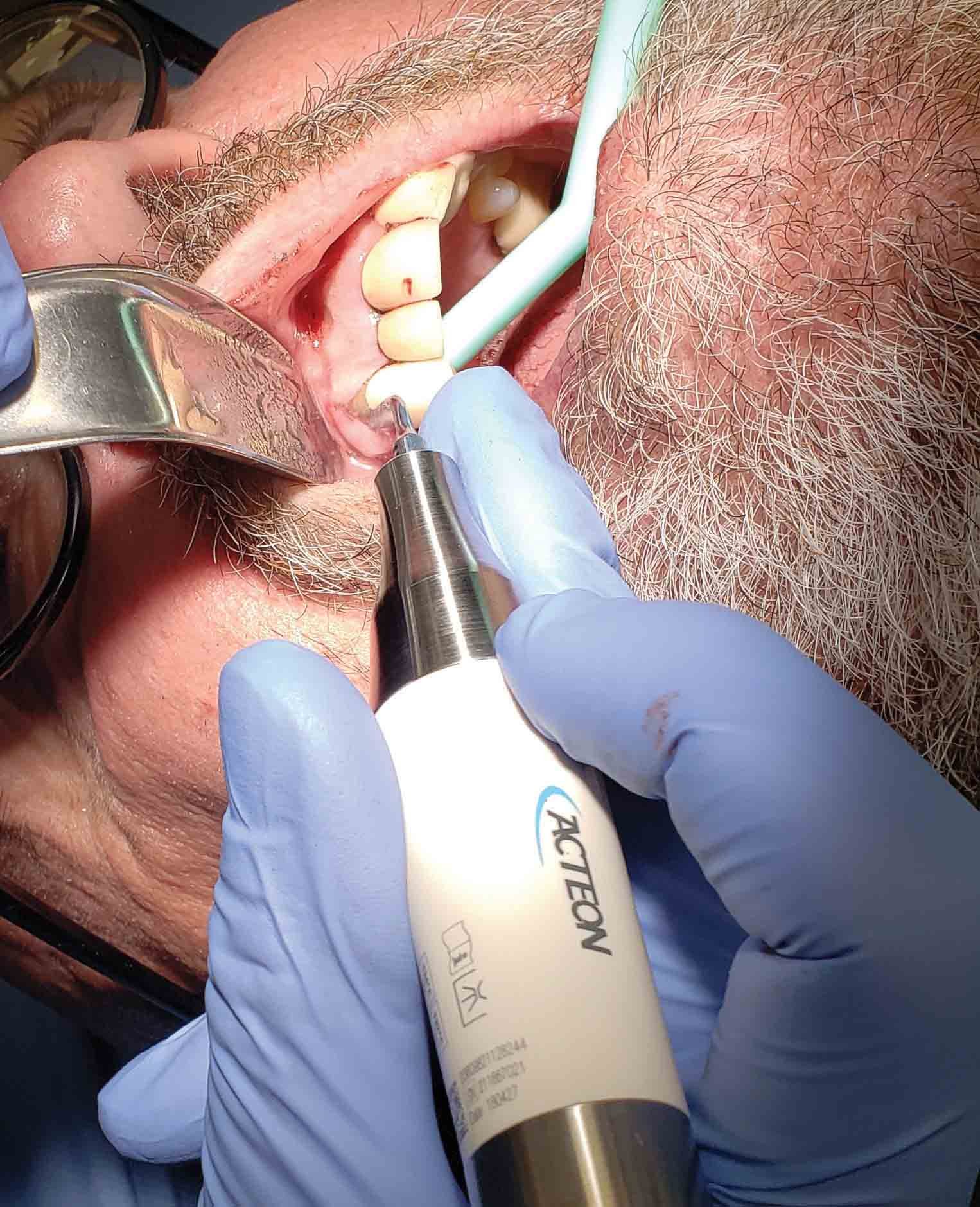Editor’s intro: Acteon® Piezotome® Cube ultrasonic technology is expected to lead to a dynamic shift in how dentists are able remove teeth in the future to preserve the buccal plate.
Dr. Justin Moody discusses a new tool for efficient tooth extraction before an immediate implant
One of the fundamental skill sets for implant dentistry is the ability to remove teeth while preserving bone, particularly the buccal plate. This is vital to the preservation of bone volume, especially when immediate dental implants are planned. It can be frustrating, even to the most skilled surgeon to encounter paper-thin buccal plates and stubborn teeth such as large canines.
When extracting a tooth for a potential immediate implant placement, it is critical to keep two things in mind to optimize your chances for a positive outcome. First and foremost is buccal bone preservation. This is essential for long-term crestal bone maintenance, osseointegration, and immediate implant stability. Also of importance is minimizing the disruption of healthy soft tissue. In general, soft tissue and bone have a symbiotic relationship. When we see healthy keratinized gingiva, we will most likely find good bone underneath. Preserving the papilla and soft tissue architecture at the extraction site will contribute to a more predictable and positive long-term outcome.
 Acteon ® Piezotome ® handpiece (left) and Acteon ® Piezotome ® Cube (right)
Acteon ® Piezotome ® handpiece (left) and Acteon ® Piezotome ® Cube (right)In my experience, I have found that elevation is the key to atraumatic tooth removal. While this technique minimizes bone and soft tissue trauma, there are still some situations where the bone is so paper thin that it seems like there is no way to avoid loss of at least part of the buccal plate.



Earlier this year, I had the opportunity to try the Acteon® Piezotome® Cube ultrasonic technology for atraumatic tooth extraction. Ultrasonic instruments are far less traumatic for the patient then traditional elevators and forceps. At the same time, they are superior at preserving the bone that is essential for ridge preservation and immediate implant placement. The instruments are inserted between the cementum and periodontal ligament (PDL). The tips then widen the ligament space with minimal bone loss and loosen the tooth so that there is little to no luxation required for delivery of the tooth. The frequency modulation is controlled for soft tissue preservation, resulting in better tissue recovery after the surgery. The linear thin tips provide smooth cutting, and the irrigation flow reaches the end of the tip regardless of the orientation, thereby reducing the risk of overheating the bone. I am convinced that this technology will lead to a dynamic shift in how we will remove teeth in the future and encourage you to give it a try!
Besides preserving the buccal plate, Dr. Justin Moody offers his guidance to readers through mentoring. Read his ideas about sharing the knowledge here.
Stay Relevant With Implant Practice US
Join our email list for CE courses and webinars, articles and mores

 Justin Moody, DDS, DICOI, DABOI, is a Diplomate of the American Board of Oral Implantology and of the International Congress of Oral Implantologists, Fellow and Associate Fellow of the American Academy of Implant Dentistry, and Adjunct Professor at the University of Nebraska Medical College. He is an international speaker and is in private practice at The Dental Implant Center in Rapid City, South Dakota. He can be reached at justin@justinmoodydds.com or at www.justinmoodydds.com.
Justin Moody, DDS, DICOI, DABOI, is a Diplomate of the American Board of Oral Implantology and of the International Congress of Oral Implantologists, Fellow and Associate Fellow of the American Academy of Implant Dentistry, and Adjunct Professor at the University of Nebraska Medical College. He is an international speaker and is in private practice at The Dental Implant Center in Rapid City, South Dakota. He can be reached at justin@justinmoodydds.com or at www.justinmoodydds.com.
